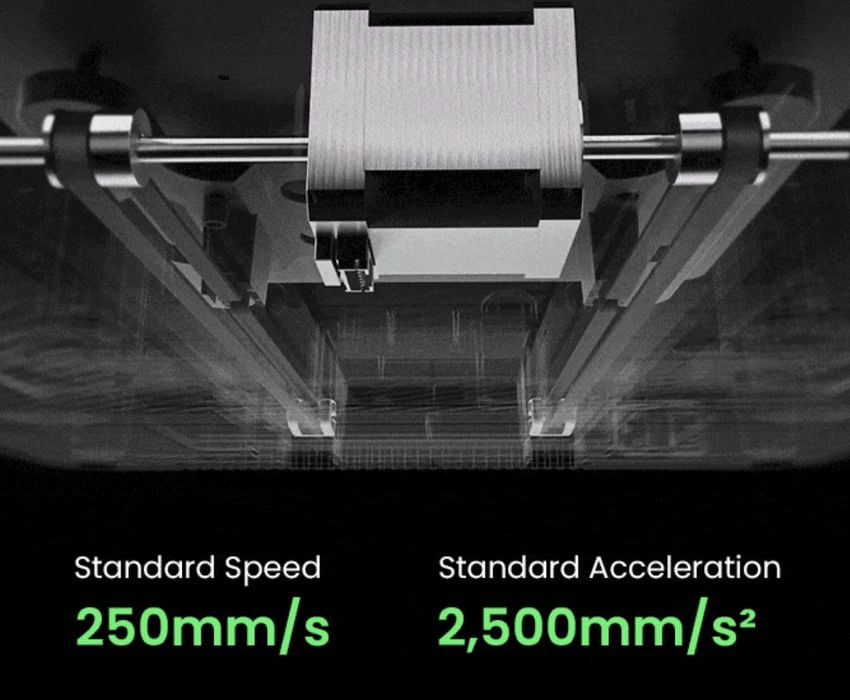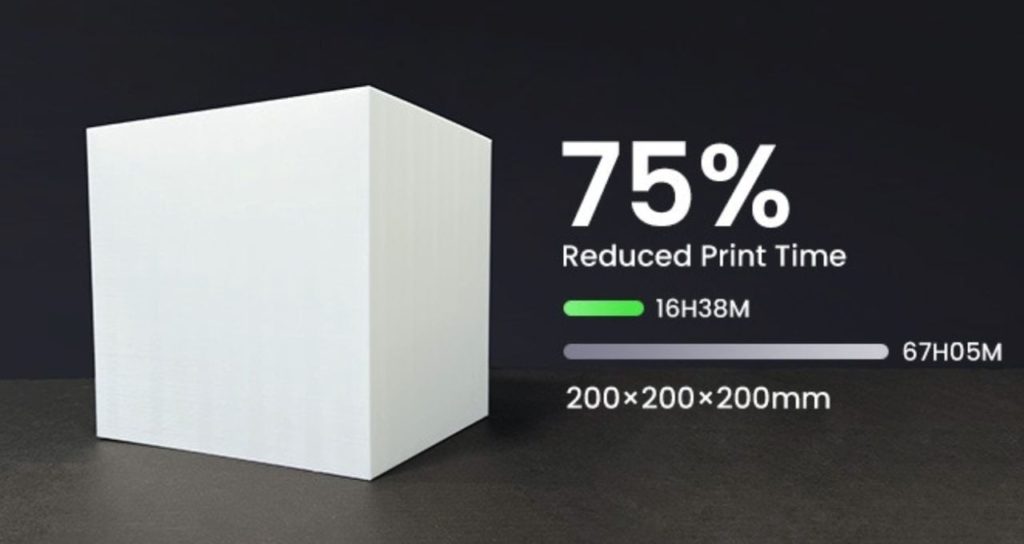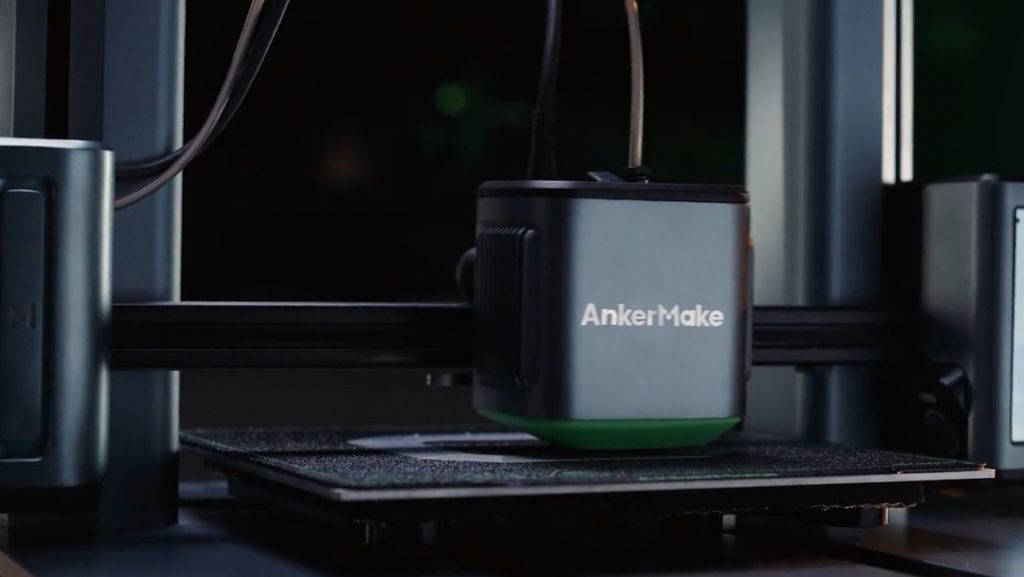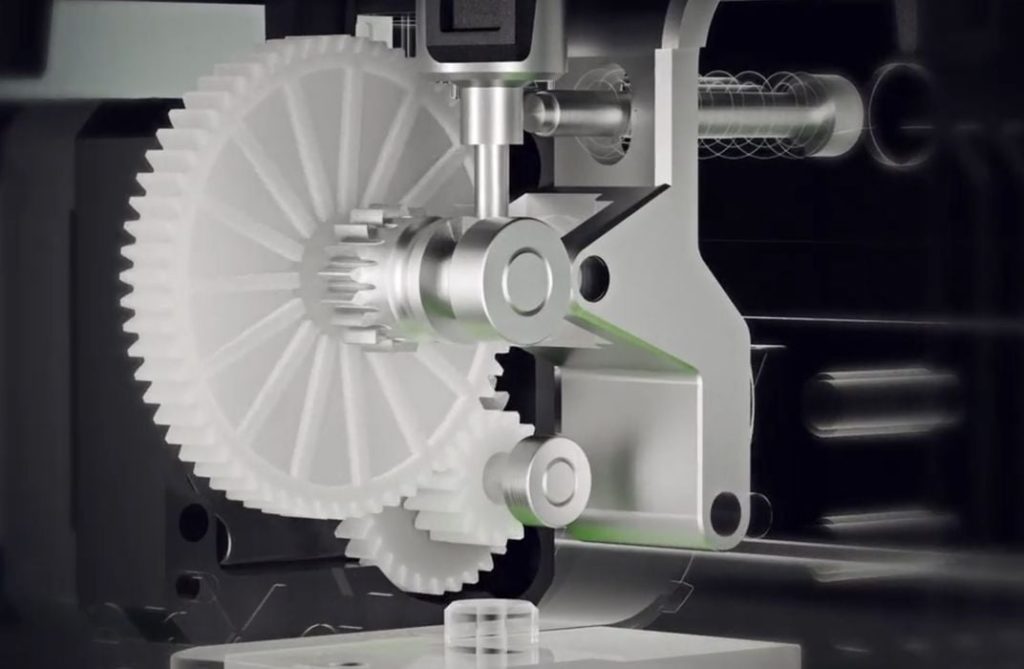
More questions arise about the new Anker M5 3D printer, even before it ships.
Anker is a large company well known for its production of electronics accessories, and the M5 is their first foray into the world of 3D printing, through their new brand, AnkerMake.
Earlier this month the company launched the M5 on Kickstarter, a strange approach for an established company, but that’s another story. As of this writing they seem to have sold nearly 10,000 devices and collected US$6.3M in funding.
Unlike many questionable 3D printer projects that have launched on Kickstarter, Anker has a demonstrated ability to manufacture electronics products at scale, so the risk of them not delivering is miniscule.
The M5 is basically a standard i3 desktop 3D printer, but with a couple of modifications to enable faster printing, as well as an onboard camera system that has some kind of AI system to detect print failures. Otherwise it is little different from any of several alternative devices, many of which are available at lower cost with similar features.
The enormous funding amount positions the M5 in second place on the all-time list of Kickstarter 3D printer launches, behind only Snapmaker’s launch, which collected US$7.8M.
But the M5 has 30 days to go. They will almost certainly pass Snapmaker to become the all-time leader, and perhaps even break the US$10M funding barrier. You could say that the M5 is already a success.
But myself and others in the 3D print community have growing suspicions about this project. The company has taken a number of steps that are triggering my spider sense.
Sponsored reviews
There has been only two video reviews of the device so far, and both were directly sponsored by Anker. Sponsored reviews are sometimes questionable because the sponsor might be able to influence the content. This is quite different from the usual practice of sending machines to reviewers ahead of launch time with no contract required. In fact, we are reviewing several machines of this type right now.
Supermaker Naomi Wu posted a section of the review contract provided by Anker to potential video reviewers, which states:
“Proprietor will allow the Company to provide feedback on the deliverables within 48 hours upon receipt of the Deliverables and Proprietor shall revise the Deliverables according to such feedback.”
One of the video reviews is by well-regarded Uncle Jessy, who posts plenty of informative videos on 3D printing, particularly for resin gear. In his video, Uncle Jessy goes to great lengths to repeatedly explain to the viewers that this is “not a review” and is “sponsored”.
The other sponsored video is made by “ShortCircuit”, which is definitely not one of the usual 3D print video sources. In fact, ShortCircuit seems to be a general audience tech review site covering a wide variety of items, ranging from cellphones to flashlights to shoes.
In the video it’s pretty clear the reviewer doesn’t know much about 3D printing at all, and the fact that the video is sponsored is not mentioned as prominently as Uncle Jessy’s. This appears to be the only 3D printer review made by this channel in two years of operation. But they do have 1.8M subscribers, most of whom will not be 3D printer operators.
Neither video reveals anything negative about the M5. In fact, it was found to be “Much Better Than Expected” by ShortCircuit.
Speed Emphasis

The major feature of the M5 is that it can print faster, and this fact is prominently displayed everywhere possible in the M5 material: “AnkerMake M5 3D Printer – 5X Faster Printing and AI Camera”. However, I believe it’s portrayed in a potentially misleading fashion.
Anker’s title states the machine prints 5X faster, but that’s only under very particular circumstances that are unlikely to be present in any practical print. In fact, the fine print says you can decrease print times by 70%, which might be correct. This is the number that should be advertised, not the 5X number or 250mm/s speeds that are unachievable.

They do, however, show several examples where this amount of time savings has been achieved, as compared against unnamed slow printers. But which number will be top of mind for the Kickstarter readers?
Comparing Models

In the Kickstarter video, the M5 (or an animation of) is shown to “compare models” by using the on board camera. This is a practice typically done by industry to ensure that all parts produced actually meet quality tolerances. However, there is no possible way this can work on the M5 because the camera can see the printed object from only one side. There is no way to rotate the object to properly capture a 3D model for comparison. This is misleading.
Covers

The M5 looks different from other desktop 3D printers, and this is surprising because it is basically an i3 clone. The reason for the visible difference is that Anker decided to place a plastic cover on various parts of the machine that are typically exposed by other manufacturers. This makes the machine look different, yet it really isn’t that different under the covers. Stylish? Yes. Misleading? No, but it could definitely make uninformed buyers think the machine is more different than it actually is.
Gears

The M5 material indicates there are dual toothed gears in the extruder. However, the animation of the extruder innards does not actually show this. It’s unclear whether the second gear is actively powered as well. In the rest of the 3D print world, this would be prominently shown because it is a key feature. Why didn’t Anker show this?
Targeting Consumers, Not DIY

This is the most puzzling thing to me. If you watch the Kickstarter video you’ll see that Anker is clearly targeting the machine at consumers. This is also why they highlight consumer-style features like faster printing, AI quality control, etc., to quash fears, and why they chose a general audience tech channel to produce one of the sponsored videos.
The Kickstarter video shows a buyer using the M5 to produce a toy for (presumably) his child. However, to do so the father must undertake considerable 3D modeling of the complex toy parts, print them all and then paint & assemble it.
This is a relatively gigantic project that in no way could ever be attempted by a newbie 3D printer operator. Indeed, many experienced 3D printer operators could not attempt such a feat. This project would take a considerable amount of tools, experience and skill, and to show it to the targeted consumer groups who have never used a 3D printer previously is also quite misleading.
Adding It Up
I have little doubt that the M5 will operate successfully as a 3D printer, and Anker will almost certainly deliver it on time.
However, the style of presentation of the M5 material seems misleading at times, and this gives me some concerns. I would not be surprised if many M5 buyers are disappointed, not because the machine doesn’t work, but because their expectations have been inflated by the style of the marketing campaign.
Via Kickstarter and AnkerMake

